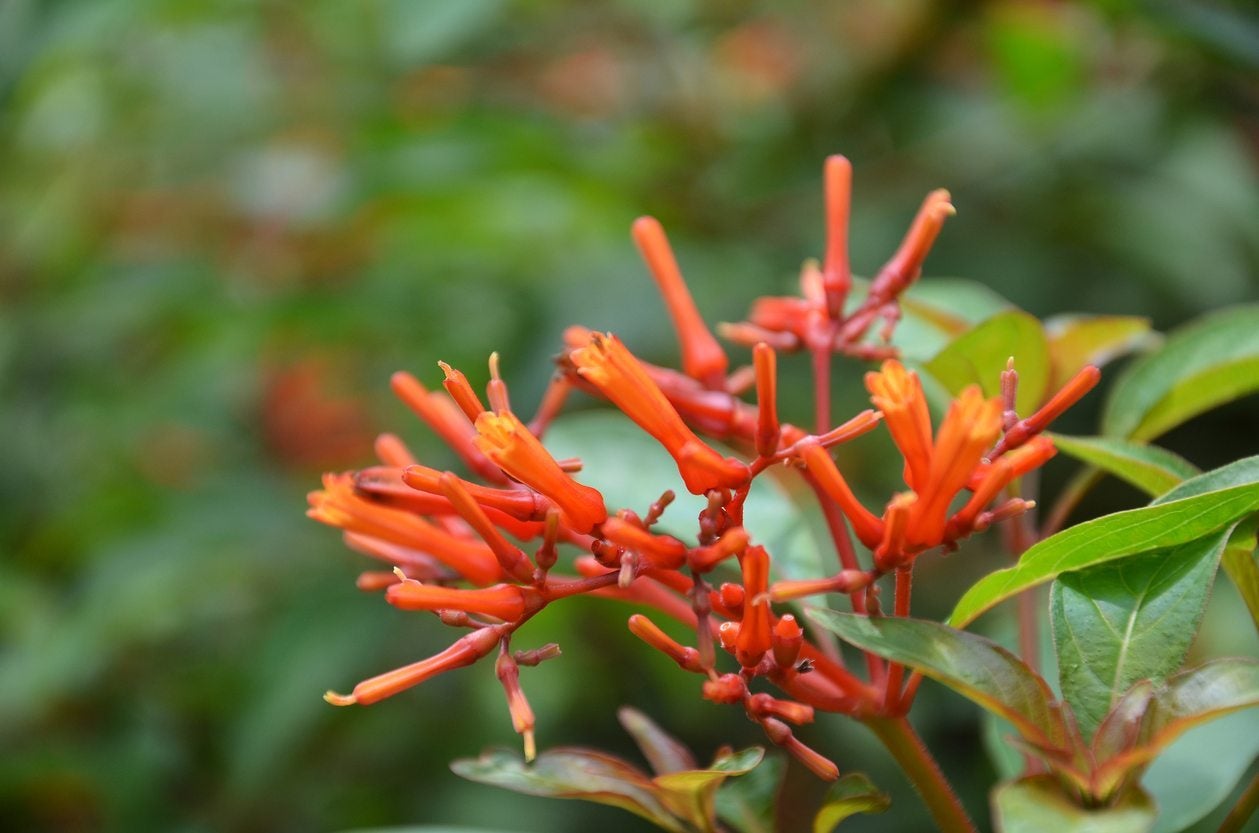Firebush Information – How To Grow Hamelia Firebush Plants


The name firebush doesn’t just describe this plant’s gorgeous, flame-colored flowers; it also describes how well the large shrub tolerates intense heat and sun. Perfect for zones 8 through 11, growing a firebush is easy if you know what conditions it needs to thrive. Exactly what is a firebush though?
Firebush Information
Firebush, also known as Hamelia patens, is a native to the southern U.S. and is a large, woody shrub. It can grow as tall as 15 feet (5 m.), but firebush can also be kept smaller. It grows quickly, shooting up several feet (1 m.) in its first growing season. Hamelia is a favorite plant in many southern states, like Florida, because it is native and easy to grow, but especially because it produces gorgeous flowers from spring all the way through the fall.
These bright, coppery-red blooms also attract pollinators to the garden, including butterflies and hummingbirds. Firebush also comes in a compact or dwarf size, which can be found at many nurseries. There is also a relatively new cultivar called ‘Firefly.’ This cultivar looks similar to the original firebush, but its leaves and flowers are about half the size.
How to Grow Hamelia Plants
Firebush plant care is not hard if you give it the right conditions and you have the right environment for it. Once Hamelia is established, it will tolerate drought and heat. Firebush absolutely requires warmth and full sun, so this is not a plant for northern climates or shady gardens. There are no known pest or disease issues that are common with firebush, and it is not particular about soil type.
Firebush will even tolerate some salty spray from the ocean. To grow firebush in your garden, plant it in late spring or early summer. Make sure the soil drains well, because this plant will not tolerate soggy roots. Water your Hamelia regularly until it has become established. Prune it as needed to keep it to a reasonable size but avoid over pruning. This will limit the production of flowers.
You can propagate firebush by seed or by cuttings. For southern gardeners, growing a firebush is a great way to add color and density to a space. With the right conditions of sun, heat, and moderately dry soil, you can easily keep this pretty bush happy and thriving in your garden.
Sign up for the Gardening Know How newsletter today and receive a free copy of our e-book "How to Grow Delicious Tomatoes".

Mary Ellen Ellis has been gardening for over 20 years. With degrees in Chemistry and Biology, Mary Ellen's specialties are flowers, native plants, and herbs.